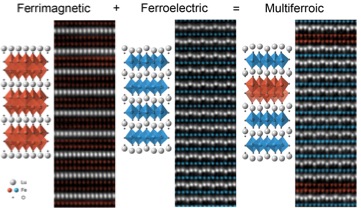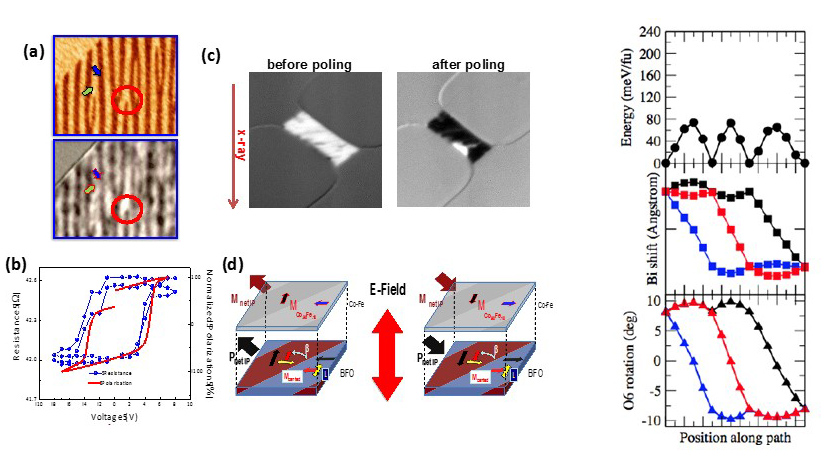Electric Field Control of Magnetism Using Multiferroics
Electric Field Control of Magnetism Using Multiferroics
This research area explores the physics and control of thermal effects in materials with ferroic order, one of the most underdeveloped areas of solid state materials science. We focus on the development of materials and know-how to enable pyroelectric energy conversion of waste heat to electrical energy, electrocaloric solid state cooling, thermally-driven electron emission, and more. Our comprehensive approach includes aspects of materials design, synthesis, device fabrication, and advanced characterization development and utilization. Recent work in this regard has provided understanding about the role of domain walls in pyroelectric response, produced novel methods for studying heat-based effects in ferroic thin-film capacitors, and demonstrated colossal energy conversion processes in materials.
Highlight Atomically engineered ferroic layers yield a room temperature magnetoelectric multiferroic

 Materials that exhibit simultaneous order in their electric and magnetic ground states hold promise for use in next-generation memory devices in which electric fields control magnetism.
Materials that exhibit simultaneous order in their electric and magnetic ground states hold promise for use in next-generation memory devices in which electric fields control magnetism.
Such materials are rare, owing to competing requirements for ferroelectricity and magnetism.
We've developed a methodology for constructing multiferroic materials in which ferroelectricity and strong magnetic ordering are coupled near room temperature.
Highlight: Deterministic switching of ferromagnetism at room temperature using an electric field, Nature, 516, 370(2014)
Multiferroics present the ability to control magnetism with electric field at AttoJoule energy scales. The single-phase multiferroic material, BiFeO3, exhibits magnetoelectric coupling at room temperature with weak ferromagnetism arising from the Dzyaloshinskii–Moriya interaction.
Here we show a deterministic reversal of the D-M vector and canted moment using an electric field at room temperature. First-principles calculations reveal that the switching process favors a two-step switching process in which the DM vector and polarization are coupled and 180° deterministic switching of magnetization hence becomes possible, in agreement with experimental observation. Our results suggest ways to engineer magnetoelectric switching for nanometer-scale, low-energy-consumption, non-volatile magnetoelectronics.

